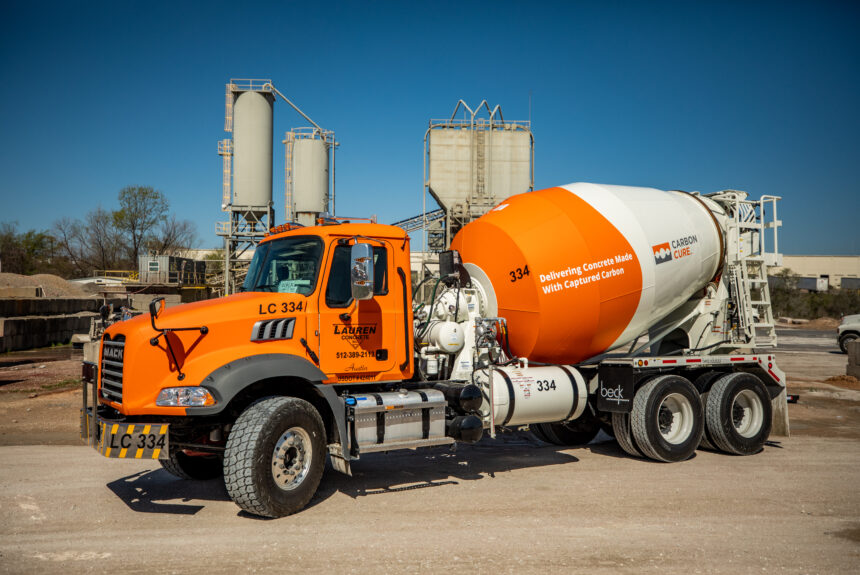Concrete is the world’s most widely-used substance, second only to water. The building block of everything from roads to bridges, concrete is indispensable to modern living but its production process is incredibly carbon-intensive. The creation of concrete requires the addition of cement to a mix, the key ingredient in concrete which lends it its strength. According to The National Ready Mixed Concrete Association, each pound of cement produced releases roughly one pound of carbon dioxide (CO2) into the atmosphere. The cement-making process is therefore where the bulk of emissions are generated. According to data from Princeton University, the cement industry alone is responsible for 8% of all global CO2 emissions. For reference, the aviation industry emits about 2.5% of global CO2 emissions, less than triple the carbon footprint of concrete. As countries scramble to reduce their greenhouse gas emissions, the decarbonization of the industry will play an outsized part in helping the world meet its net-zero targets.
>>>READ: Turning Carbon into Concrete: How one Company is Cleaning up the Cement Industry
Enter CarbonCure Technologies, a Canadian company that manufactures a suite of technologies that enable concrete producers to add captured carbon dioxide into the production process, resulting in the same reliable concrete but with a reduced carbon footprint. CarbonCure’s CEO and Founder Robert Niven recently joined Drew Bond on Tech Voices to discuss CarbonCure’s revolutionary low-carbon solution.
CarbonCure “works with existing concrete producers and introduces a new ingredient into the mix: Carbon dioxide. That carbon dioxide is captured by other companies that capture CO2 as a waste product” or from direct air capture (DAC), Niven said. “That’s where CarbonCure comes in. We retrofit [producers’] concrete plants with some electronic and gas handling equipment for that CO2 to be added into the mixer…Once that CO2 is added it causes a very beneficial reaction where it turns from a gas into a solid mineral so it’s permanently locked away from ever being reintroduced into the atmosphere.”
As Niven noted, the CO2 doesn’t just turn into a rock but also into a mineral which improves the strength of concrete. CarbonCure’s solution allows for average savings of 25 pounds per cubic yard of CO2, or about 200 pounds per truckload delivered. The end result is a proven carbon removal pathway for concrete that is scalable, accessible, and sustainable–all without sacrificing quality or performance.
According to Niven, the solution is also cost-competitive for concrete producers.
“It actually saves [producers] more than it costs. That allows concrete producers to be able to provide a low-carbon concrete product into the market at the same price as what they were prior to using CarbonCure.”
“I don’t believe there’s a way that you can have a true scalable impact unless you are able to offer it at price parity to what the current product offering is which would be a traditional concrete product,” Niven added. “All of these things have to come together, but when you get it right, it can really scale up quickly.”
Since its founding in 2012, CarbonCure’s work has made a sizable impact on the construction industry. The company’s low-carbon concrete solution is currently being used in the building of Amazon’s HQ2 in Arlington, Virginia, and General Motors’ Spring Hill Assembly Plant in Tennessee, as well as several other projects. For Amazon’s HQ2 and the GM plant, the company estimates that its product will prevent 1,144 metric tons and 379,000 pounds of CO2 from entering the atmosphere, respectively.
CarbonCure’s technology is licensed to just over 700 suppliers across the globe, with the largest market concentrated in the United States. CarbonCure currently serves 30 countries. About one-third of them are developing economies.
>>>READ: Enginuity Power Systems: Clean Power with Natural Gas, Propane, and Hydrogen
The company’s success in emerging markets is crucial because the world’s building stock is expected to double by 2060, which is equivalent to building another New York City every month. A majority of this construction will occur in developing nations as their economies grow and infrastructure needs increase. In order to maximize its climate impact, getting early in those markets is critical.
“We could have wild success in the U.S., and still not have a dent on the climate impact,” Niven said. “We need to make sure that this technology is applicable in emerging markets.”
Ultimately, CarbonCure wants to change the “paradigm” of carbon dioxide from its current negative connotation as a greenhouse gas to an essential “value-added feedstock” in creating concrete.
The company receives no government incentives for the deployment of its technology.
“We don’t receive government subsidies,” Niven said. Revenue is generated from “carbon credits sold in the voluntary carbon market” and “on the basis of [expected] production cost savings.”
As the world looks to reduce emissions while supporting growing economies and cities, decarbonizing the concrete supply chain will be critical to reaching key environmental objectives. CarbonCure’s innovative carbon removal solution is a testament to the role of the private sector in helping us meet our climate goals.
Nathalie Voit is a freelance content creator and a graduate of the University of Florida. She is an alumni of The Heritage Foundation’s Young Leaders Program.
The views and opinions expressed are those of the author’s and do not necessarily reflect the official policy or position of C3.
